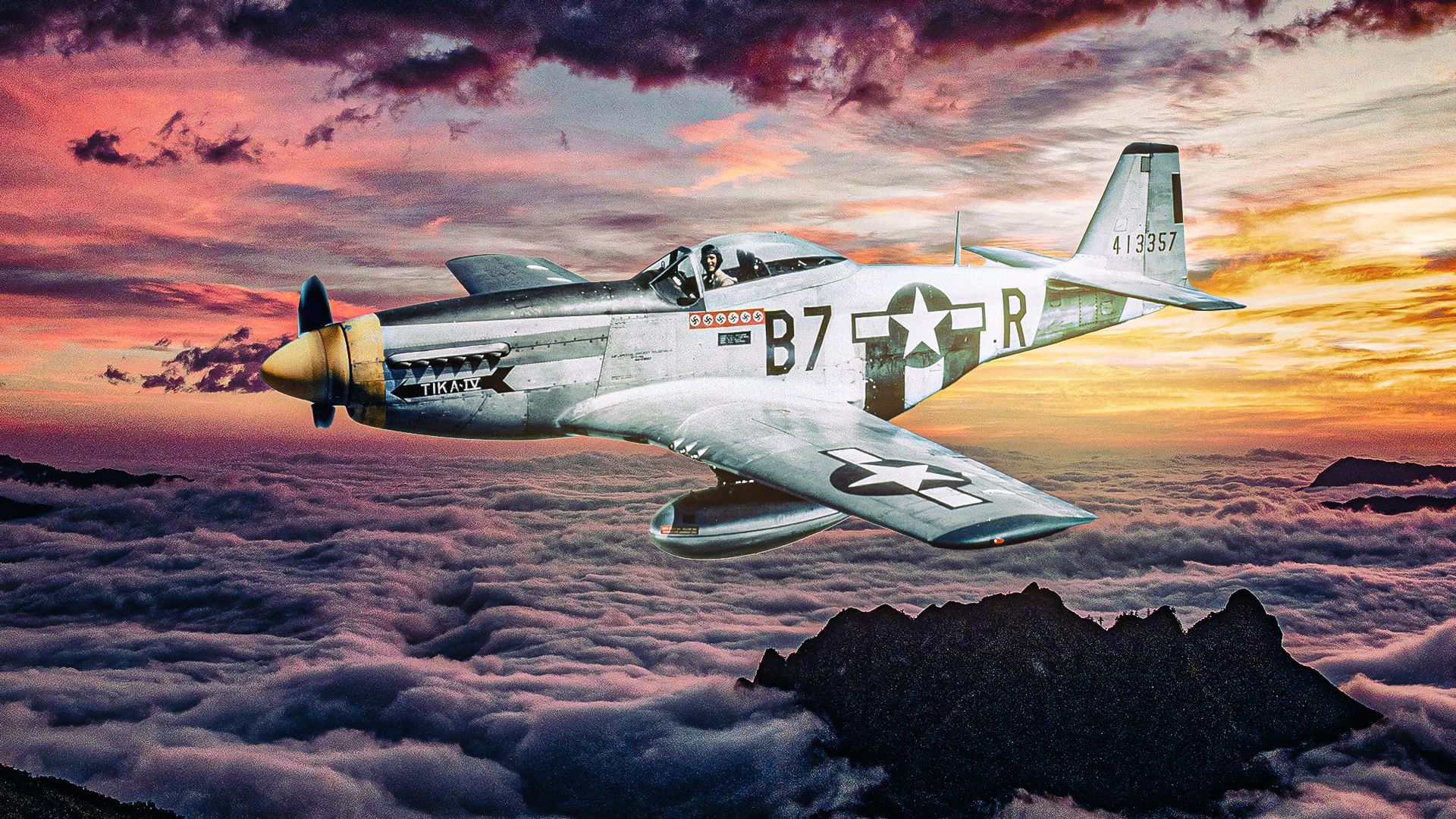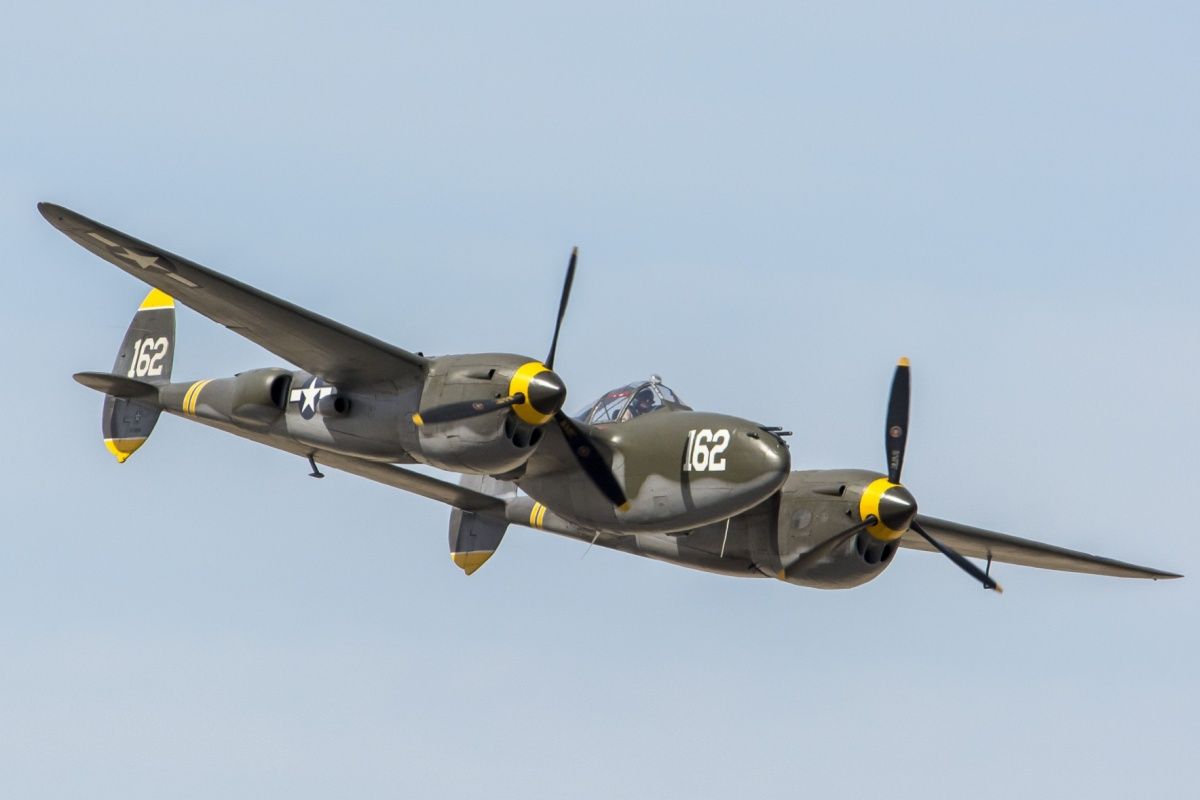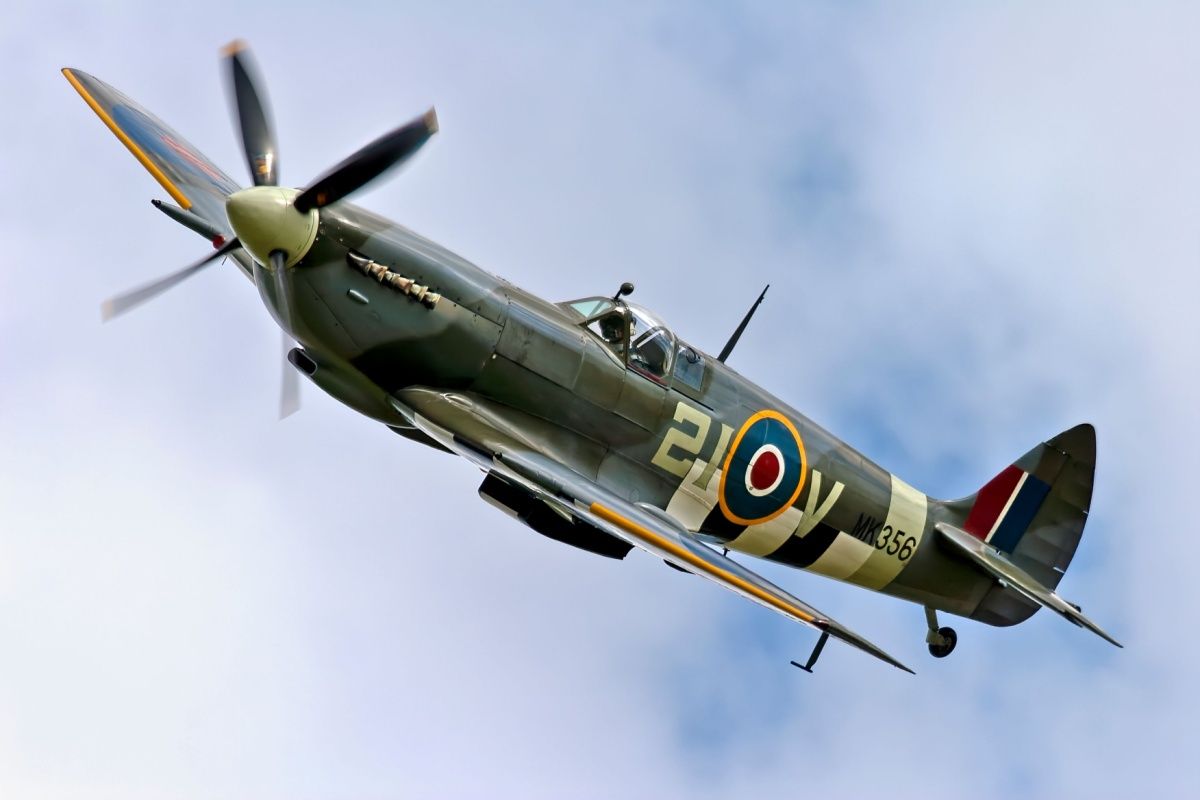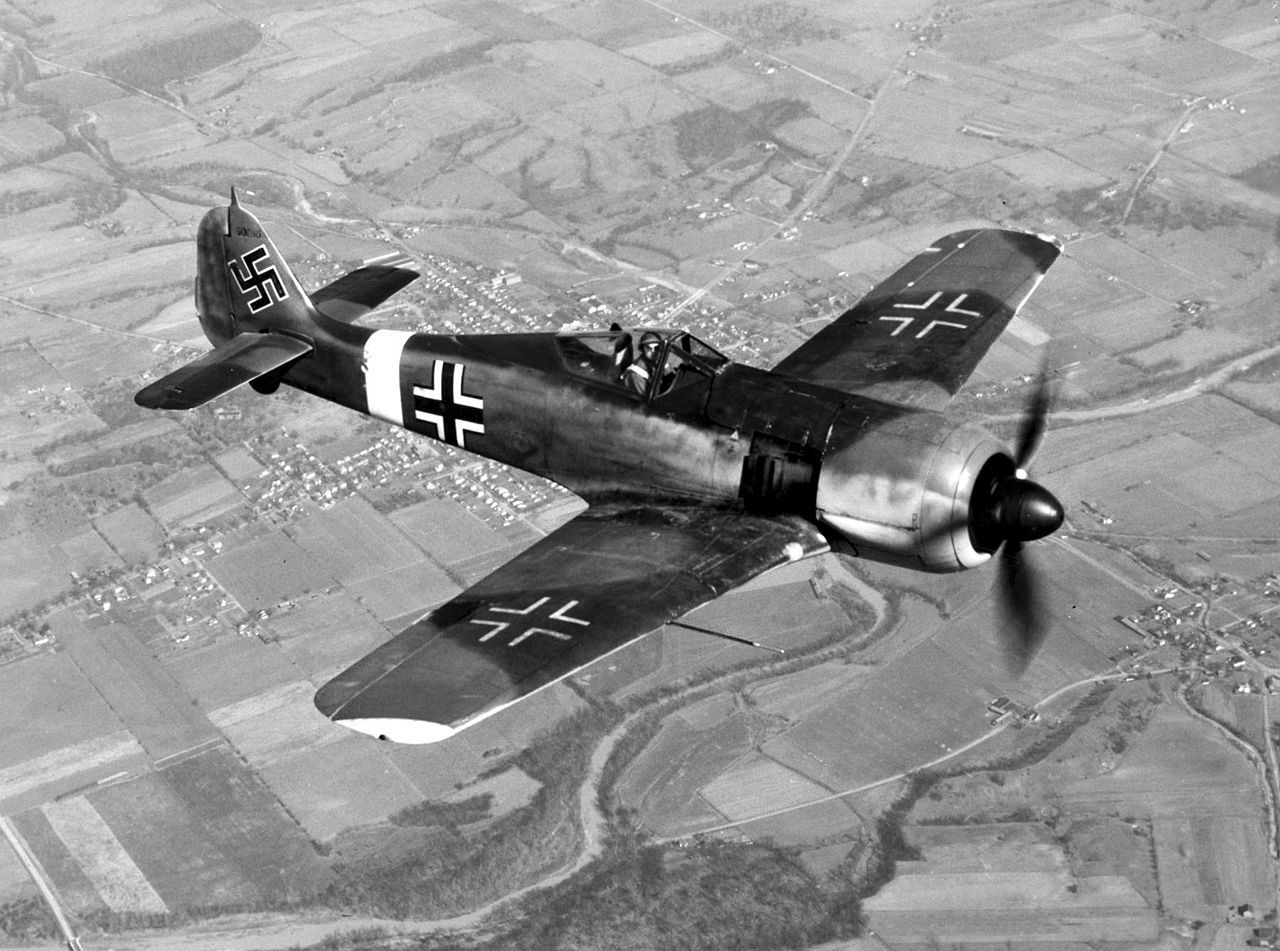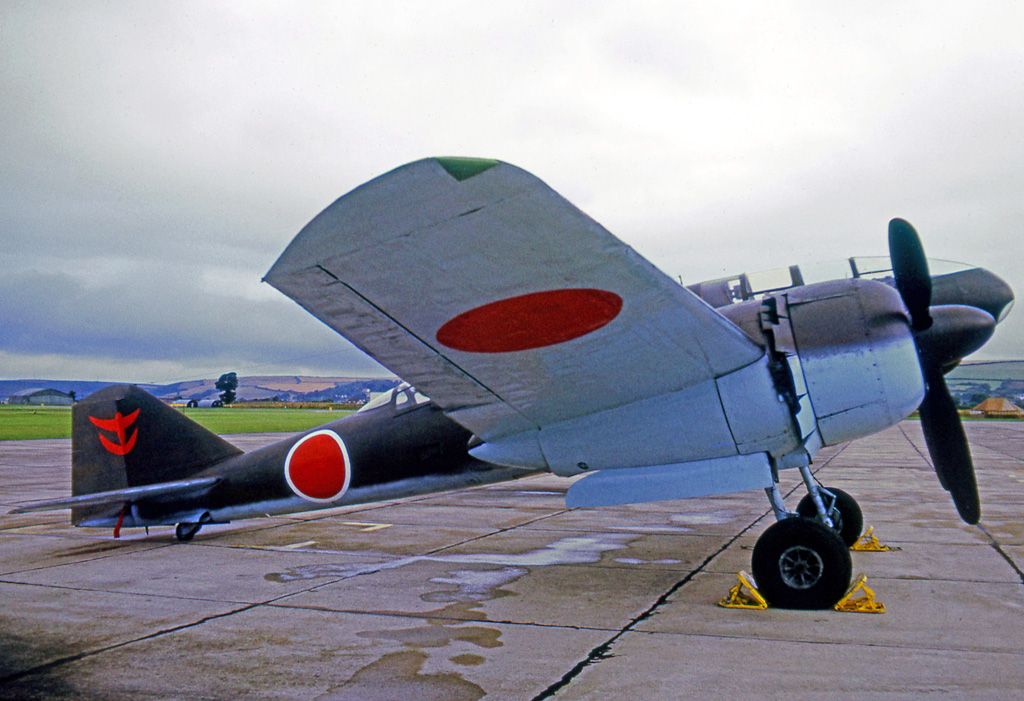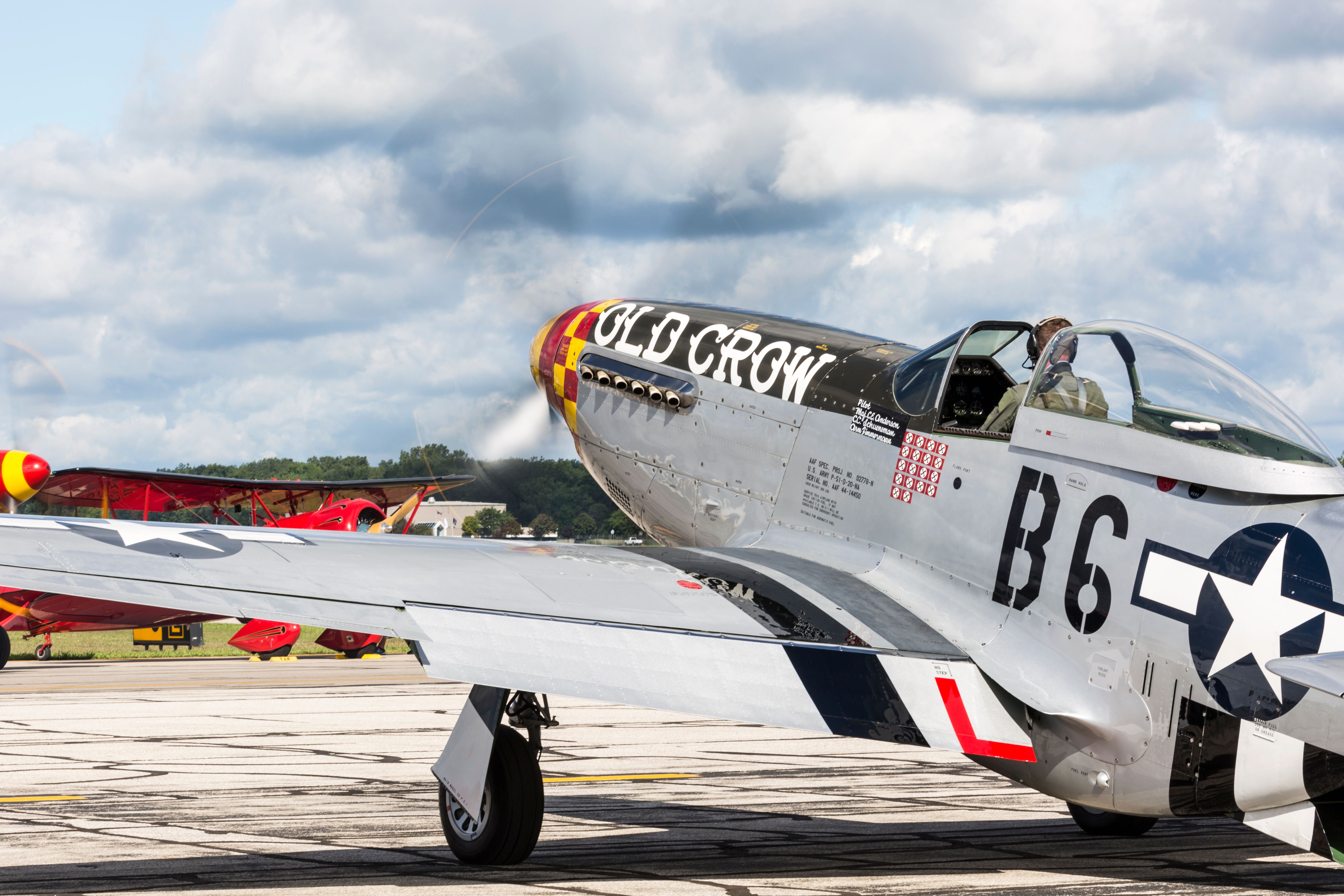Summary
- The Lockheed P-38 Lightning had specialized cameras.
- Photo-reconnaissance aircraft were unarmed to focus on imagery.
- The North American F-6 Mustang excelled in reconnaissance missions.
Several photo-reconnaissance aircraft excelled during World War II. Whether it was keeping an eye on targets and enemy movements or accessing damage on the ground, the aircraft capable of high-altitude imagery were key to air forces worldwide. This article shows notable reconnaissance aircraft of the Second World War.
1
Lockheed P-38 Lightning
Camera-equipped F-4s and F-5s
The Lockheed P-38 Lightning has a reconnaissance version which has specialized cameras equipped for imagery reconnaissance missions. The F-5s carried five powerful aerial cameras capable of taking images in vertical and oblique configurations. The only weapons those unarmed, lone pilots of F-4s and F-5s were their cameras.
Photo: Santiparp Wattanaporn l Shutterstock
The photo reconnaissance aircraft were tasked with:
- Flying into enemy territory for imagery purposes, without guns.
- Participating in dog fights only to evade aircraft that have spotted them during their mission.
- Performing pre-strike intelligence gathering and post-strike damage assessment.
The aircraft was used in critical missions during World War II to photograph enemy targets, monitor troop movements, and assess damage from bombs. These aircraft were generally painted blue for better camouflaging in the air.
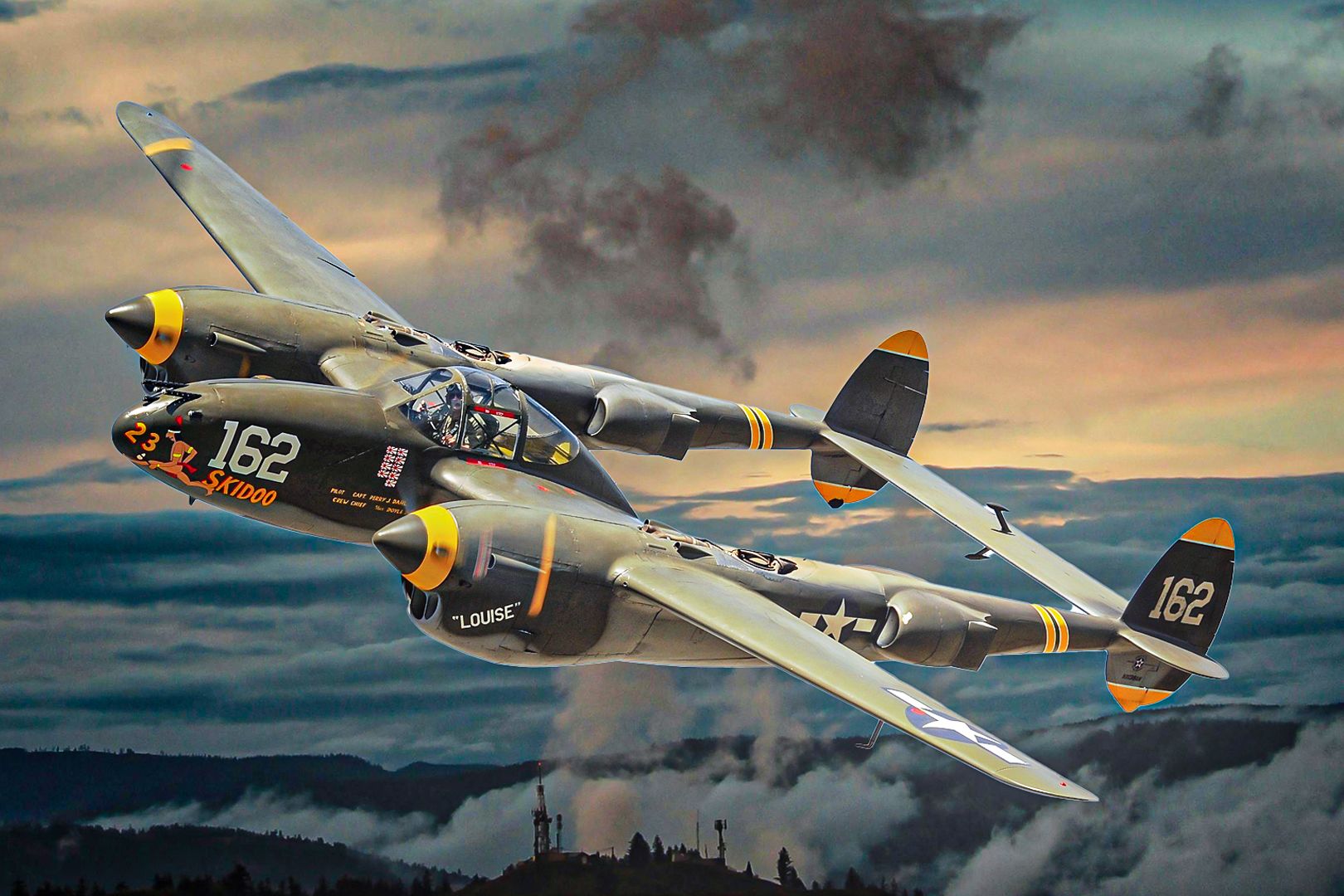
Related
WWII: The Only American Pilot To Defect Stole P-38 Lightning & Headed For Milan
Martin Monti defected from the US Army Air Force to work for the Germans in WW2 and was later found guilty of treason.
2
Supermarine Spitfire PR.XI
Number built: 471
- Wingspan: 36 ft. 10 in.
- Length: 30 ft.
- Height: 12 ft. 7 in.
- Weight: 8,040 lbs. loaded
- Engine: Rolls-Royce Merlin 61, 63 or 70
- Power: 1,655 horsepower
- Maximum speed: 422 mph
- Cruising speed: 369 mph
- Range: 1,360 miles
- Ceiling: 40,000 ft.
The PR.XI version of the Spitfire is an interceptor modified for imagery reconnaissance using various cameras. Due to the removal of ammunition, the aircraft has a more powerful engine with a much larger fuel capacity.
The Air Force states that out of a total of 20,351 Spitfires, 471 XI versions were produced between 1943 and 1946, enabling its use by Great Britain and its allies. The aircraft saw great success in all theaters during the Second World War.
Photo: Andrew Harker l Shutterstock
According to the National Museum of the United States Air Force,
“The U.S. Army Air Forces’ 14th Photographic Squadron of the 8th Air Force operated Spitfire Mark XIs from November 1943 to April 1945, flying hazardous long-range reconnaissance missions over mainland Europe. Placed on display in 1993, this aircraft is painted as a 14th Photographic Squadron Mark XI at Mount Farm airfield in England.”
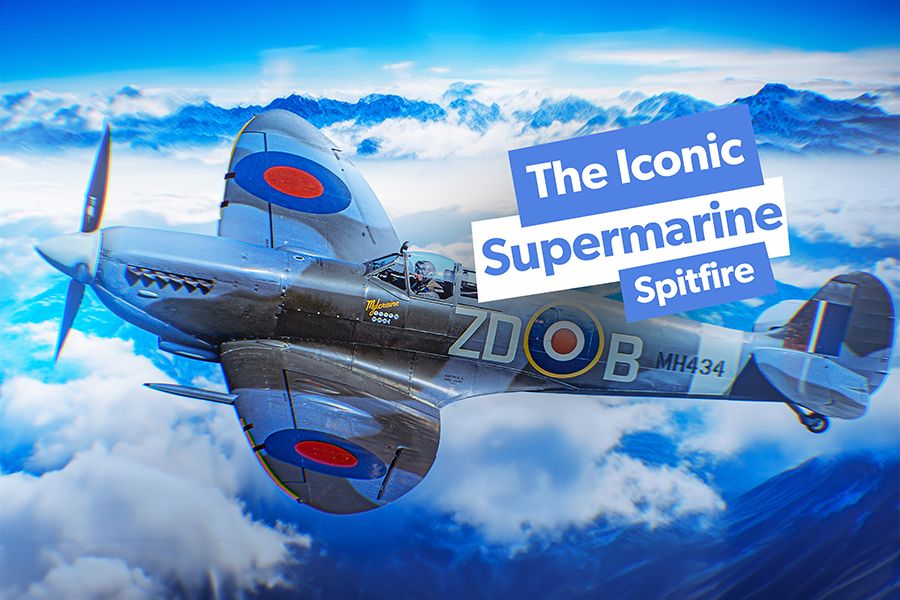
Related
Why Is The Supermarine Spitfire So Iconic?
The aircraft was by far the best-known British fighter of the war.
3
Focke-Wulf Fw 189 Uhu
Number built: 864
- Powerplant: 2 × Argus As 410A-1 V-12 inverted air-cooled piston engines
- Power per engine: 459 hp (342 kW)
- Maximum speed: 344 km/h (214 mph, 186 kn) at 2,500 m (8,200 ft)
- Cruise speed: 317 km/h (197 mph, 171 kn)
- Landing speed: 120 km/h (75 mph; 65 kn)
- Range: 940 km (580 mi, 510 nmi)
- Service ceiling: 7,000 m (23,000 ft)
The Focke-Wulf Fw 189, also known as “The Flying Eye,” first flew in 1938, and production began in 1940. The type was primarily used as the German Army’s main reconnaissance aircraft on the Eastern Front.
Avbuyer reports that a large number of WWII pilots complimented the aircraft’s performance in terms of accessibility and handling.
One of the pilots, Mothes, commented,
“In the role that it was designed for, principally reconnaissance, it was regarded as a superb aircraft. The Fw 189 managed to combine all the attributes needed on the Eastern Front — strength, maneuverability, toughness and reliability — with the capacity to operate from short, rough airstrips.”
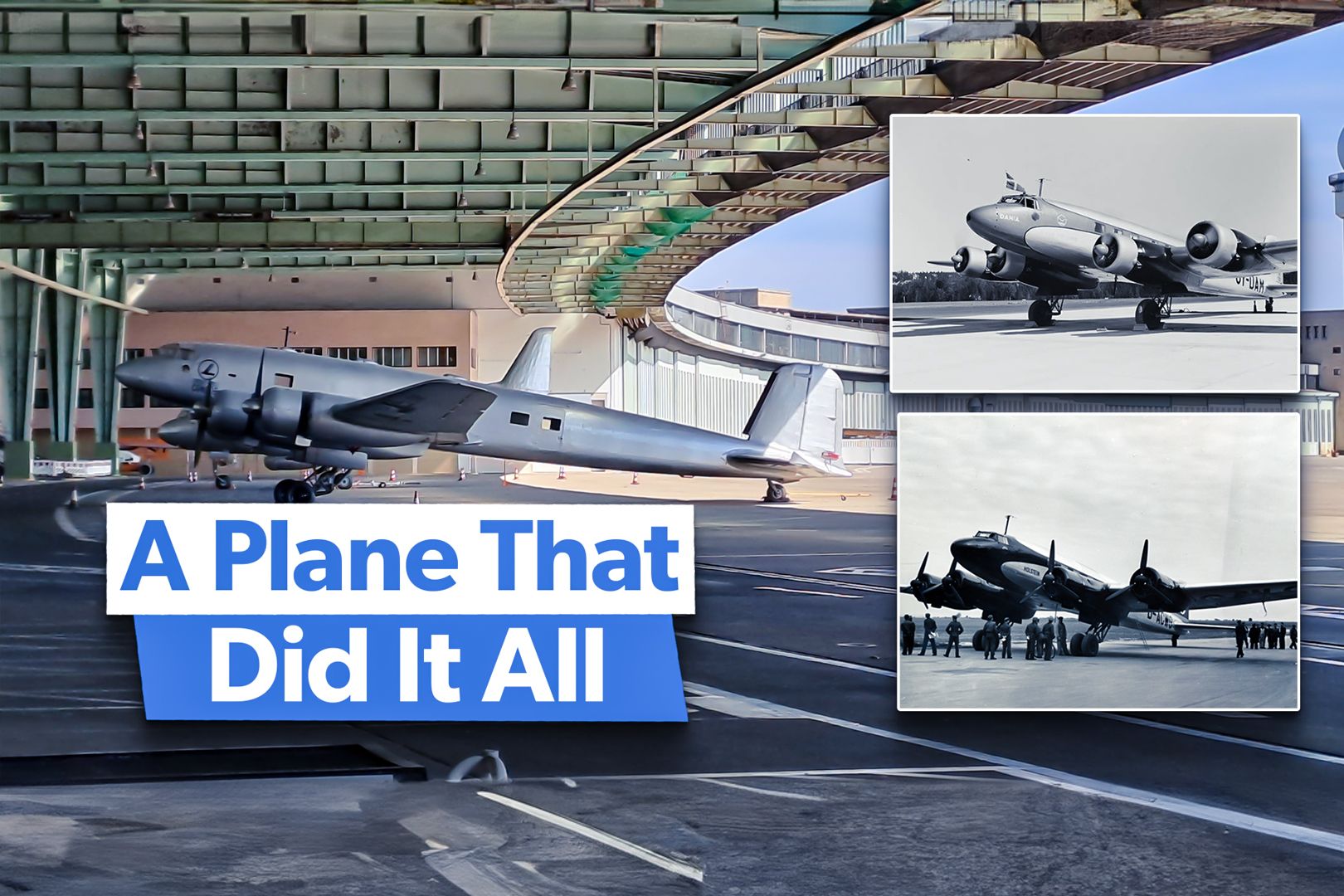
Related
More Than Just An Airliner: The Story Of The Focke-Wulf Fw 200 Condor
Between 1937 and 1944 Focke-Wulf built 276 Fw 200 Condor aircraft.
4
Mitsubishi Ki-46 Dinah
First flown in November 1939
- Powerplant: 2 × Mitsubishi Ha-102 14-cylinder air-cooled radial piston engines
- Power per engine: 810 kW (1,080 hp) each for take-off
- Maximum speed: 604 km/h (375 mph, 326 kn) at 5,800 m (19,000 ft)
- Cruise speed: 400 km/h (250 mph, 220 kn) at 4,000 m (13,000 ft)
- Range: 2,474 km (1,537 mi, 1,336 nmi)
- Service ceiling: 10,720 m (35,170 ft)
- Time to altitude: 8,000 m (26,000 ft) in 17 minutes 58 seconds
The Mitsubishi Ki-46 Dinah was one of the most elegant aircraft of World War II. The photographic reconnaissance version was created from the fighter and ground attack versions, which excelled in its role during WWII. The aircraft was capable of operating the entire Pacific theater with very little opposition, thanks to its high-speed and high-altitude design.
According to the RAF Museum,
“Before the highly successful Japanese campaign against the British in Malaya, detailed reconnaissance of the area was carried out by a Ki46 unit. Detachments of Japanese Army Air Force Ki46s were soon deployed to cover most of South-east Asia and their success led to the Japanese Navy operating a small number of Dinahs.”
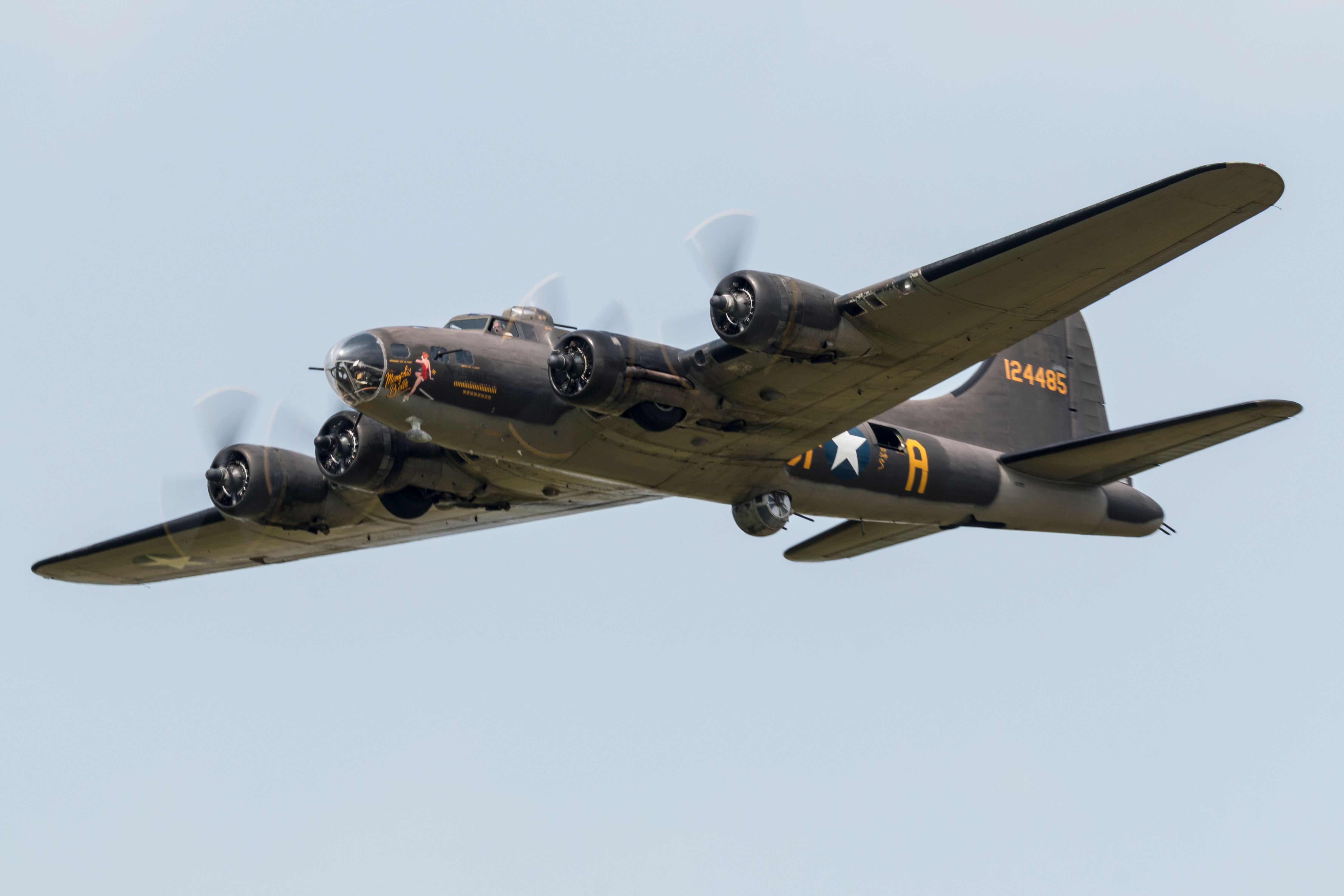
Related
Who Were The ‘Bomber Mafia’ In World War II?
They believed that precision-guided bombing campaigns could win wars.
5
North American F-6 Mustang
Conversion of the P-51 Mustang fighter
- Engine: Packard-built Rolls-Royce Merlin V-1650
- Power: 1,695 horsepower
- Maximum speed: 437 mph
- Cruising speed: 275 mph
- Range: 1,000 miles
- Ceiling: 41,900 ft.
The North American P-51 Mustang was among the most well-known aircraft of the Second World War. Various variants of the P-51 Mustang were built, and they participated in every zone during WWII. Most of the United States Army Air Force (USAAF)’s P-51 Mustangs were converted as F-6As for photo reconnaissance missions.
Photo: BlueBarronPhoto | Shutterstock
Due to the aircraft’s speed, agility, and ceiling, they excelled tremendously in imagery reconnaissance missions. Various observation squadrons of the USAAF made use of the aircraft in many theaters. According to the National Museum of the USAF,
“After the personal intervention of Gen. Hap Arnold, however, the USAAF retained 55 Mustangs from a British order. Most of these became F-6A photo-reconnaissance aircraft, which equipped the first USAAF Mustang units, the 154th and 111th Observation Squadrons in North Africa in the spring of 1943.”
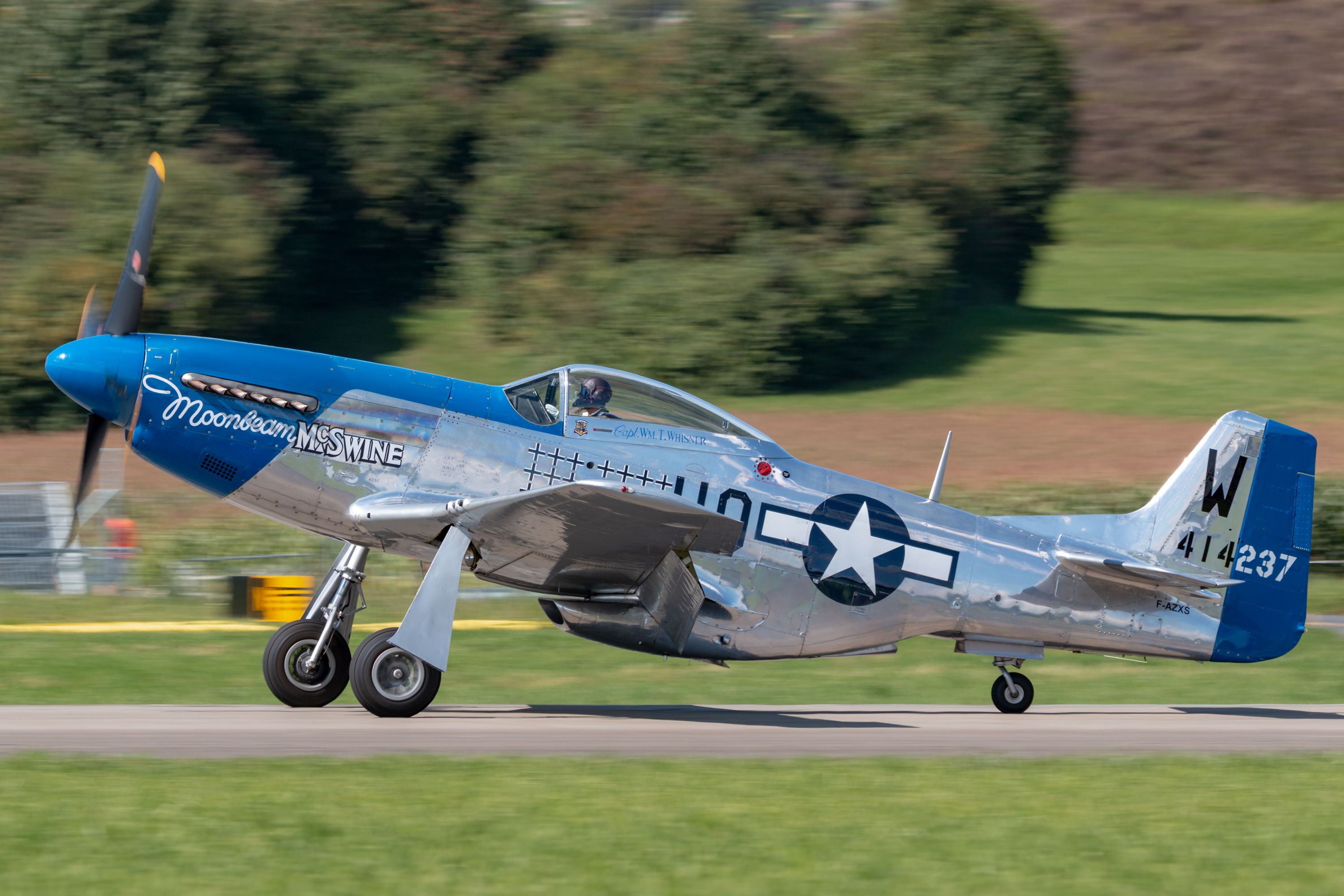
Related
Why Was The North American P-51 Mustang So Successful?
A key World War II-era fighter with the range of a bomber.

